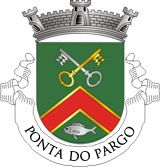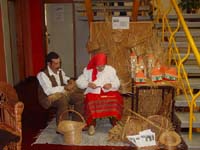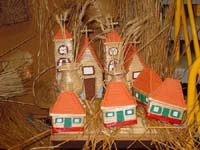Population: 909 inhabitants (Census 2011)
Population density: 52 hab/km²
History
The precise date of foundation is unknown, but it is believed to be prior to 1560. Located at the extreme southwest of the Island, the name Ponta do Pargo (Tip of the Snapper) is allusive to an episode that happened to the explorers while discovering the Madeiran coast line. Whilst fishing on Severo Afonso’s ship the sailors reeled in a huge fish similar to a snapper, thus giving the name Ponta do Pargo.
Much of the land here belonged to Garcia da Câmara and to Afonso Henriques Lord of Alcáçovas (16th century). The coast of Ponta do Pargo is extremely treacherous to navigate, resulting in the construction of a light house on the very top of a cliff (Ponta da Vigia), it was opened 5th June 1922. It is very different to the rest of the Island, its flatness, size and suave terrain are contributing factors.
Quiet and original, this parish maintains its charm all year round. The main religious festivities and the Pear Festival give it new points of interest.
Build Heritage
Parish Church of São Pedro
The chapel of São Pedro (Saint Peter) erection date and founder unknown served as the bases of the new parish of Ponta do Pargo. It was rebuilt numerous times and suffered many additions (dates also unknown). The Board of Treasury ordered its reconstruction on 20th July 1620, it was rebuild in 1690. In 1851, major repair work was completed on the temple.
According to oral tradition, it is said that the parish church, in all their constructions and reconstructions, stood in three different places, but always in Sítio do Salão. First it was at Pé do Pico, later Achada da Igreja and finally where it stands today.
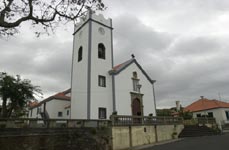 |
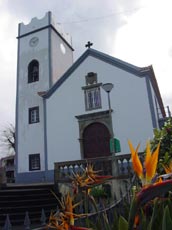 |
 |
Church of Nossa Senhora do Amparo
The parish of Amparo (protection) was founded by decree of the Bishop of Funchal, David de Sousa in 1960, and is part of the civil parish of Ponta do Pargo. The church was built in the 20th century and a very busy festival is celebrated there annually.
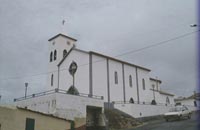 |
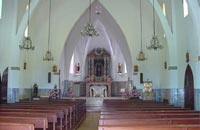 |
Infrastructure
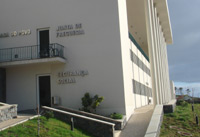 |
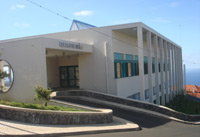 |
 |
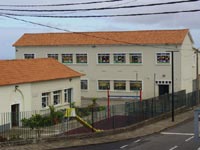 |
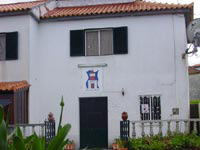 |
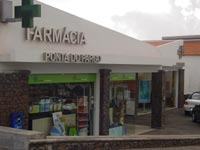 |
Handicrafts
Artisanal basket industry
Since the beginning, the people of Ponta do Pargo dedicated themselves to agriculture and raising cattle for milk, meat and help on the fields. The earth provides a bit of everything with the Sercial vine, which is grown in the Fajãs, deserving a special mention. In the flatter areas the land is ploughed with the help of cows and oxen. During the months of February and early March, wheat is sown in the fields to then be reaped during the first fortnight of July.
Wheat was of great importance, its cultivation guarantying food for the whole parish. Farming the land required the men and women to be out on the fields from dusk until dawn. Meals were prepared at the workplace, requiring the construction of transport containers for food and water. So, with a bit of imagination and the use of the materials easily obtainable, the people of Ponta do Pargo started to make baskets from wheat straw, wound in a circular fashion and held very tightly together by strips of bulrush woven with the help of a metallic needle.
These baskets held various shapes and forms depending on the size of the family. Stories tell us that when people went up into the highlands to cut bracken, they would cook Milho (a kind of cornmeal porridge) and take it in their baskets. This process consisted in placing a linen towel or cloth at the bottom of the basket, then they would scatter flour over the cloth to prevent the Milho from sticking. Holding the tips of the cloth in place, the contents of the pot was poured into the basket. Once it was time to eat everyone would gather around the basket to eat the still warm Milho. It was accompanied by wine and pork cracklings. They also used these baskets to carry water to the farm and also carry bread and cod (bacalhau), during the pilgrimages of Loreto, Ponta Delgada and Monte.
Artisanal weaving industry
Artisanal weaving industry: Flax is a herbaceous plant belonging to the Linaceae family that can grow up to a meter tall. It is comprised of a number of sub-species associated with the plant Linum usitatissimum. It consists, essentially, in a fibrous substance from which a textile fibre is extracted to manufacture fabrics and of a woody substance. It produces oleaginous seeds and its flour is made into poultices utilized for medicinal purposes.
History
The exact time and place of the first use of flax as a means to create fibre is unknown, neither is it known when it was first cultivated. The first traces of its use appear in lake homes in Switzerland dating to about 800 years ago. In Egypt fragmental traces of its use were found in Neolithic burial sites dating to around 500 A.D. These findings not only prove that flax and linen have been in use for centuries, but that its development spans many centuries more. Linen is mentioned in the Old Testament. The curtains and veil of the tabernacle and Aarons vests were made of “fine linen”. Christ’s tunic was made of seamless linen.
The plant appears later in certain regions of Mainland Greece - where linen was also one of the most important textiles. In the area that came to be known as Portugal, the cultivation and use of this plant dates back to pre-history. In Caldas de Monchique, in the Algarve a tumulus dating to about 2500 A.D. was discovered to have shreds of linen in side.
From cultivation to weaving
A well-known Portuguese proverb “os tormentos do linho” (the torments of flax) connotes a painful and difficult life. This saying refers to the lengthy process of harvesting flax.
Cultivation
In general flax grows well in any climate although it does prefer deep, permeable clay based soils. Because its growing cycle is short, the plant must rapidly absorb minerals: Fresh rich soils are the most suitable whilst in poor land, the fertilization processes must be carefully applied. According to tradition, "flaxseed should be sown on the first Friday of March, for it to grow big and strong. To obtain a more fibrous plant it should be sown through the New Moon, during Carnival.
The linseed (flax seed) is saved from one year to the other, somewhere smoky for they "are preserved longer and grow better." In the past people used to walk barefoot. As such, they were subject to wounds on their feet. To treat these wounds, linseeds were boiled in a pot: once cooked the water would become viscous. To cure lesions the cooked linseeds were spread on the area. Flaxseeds were also used to make infusions (good for the intestines).
Tradition dictates that once in the ground, the area should be blessed, then the soil should be mixed with compost with a forked hoe. It was also traditional to place a reed, about 80 cm long, in the soil to serve as a marker and reference until the harvest. Flax sown during this time of the year does not need to be watered only weeded. When necessary watering takes place at sun rise using the tradition methods of the Island.
In May the fragile blue flowers bloom making way for the seeds. “Between São João and São Pedro is the time to reap the flax”. The harvesting of the stems must be done just before the fruits dry, so that the fibres do not become rough; it also should not be done too soon or they’ll be too weak. The harvest is done by hand, by uprooting the plant as to take advantage of the full length of the stems, forming handfuls with the seeds all to one side. This task was accompanied by songs, which are still reminisced by the older population.


